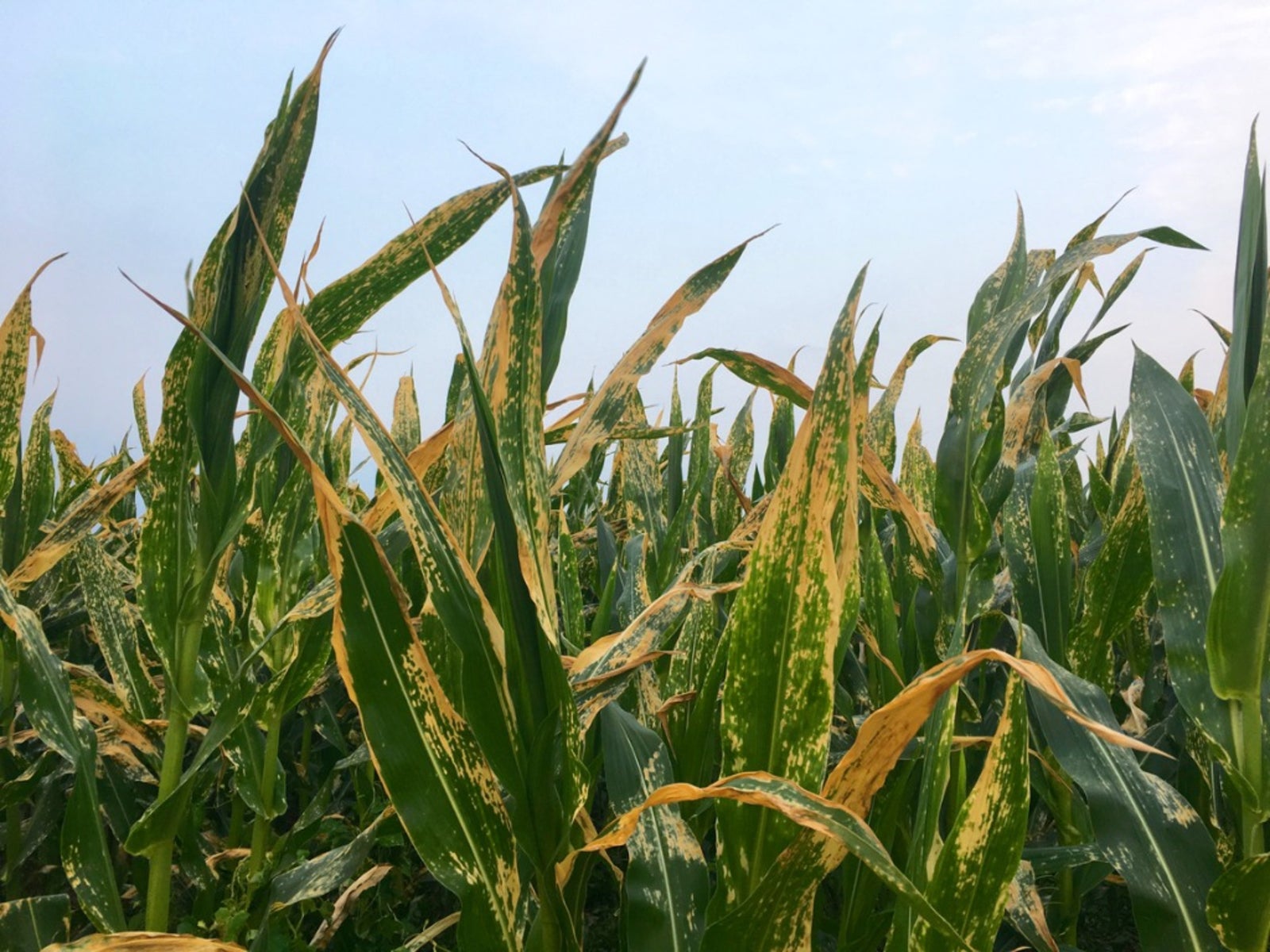Corn Plant Problems: Reasons A Corn Plant Is Wilted

If you have withering corn plants, the most likely cause is environmental. Corn plant problems such as wilting may be the result of temperature fluxes and irrigation, although there are some diseases that afflict corn plants that may result in wilted corn plants, too.
Environmental Causes of Wilting Corn Stalks
Temperature - Corn thrives in temps of between 68-73 F. (20-22 C.), although the optimal temperature fluctuates over the length of the season and between day and night temperatures. Corn can withstand short cold snaps (32 F./0 C.), or heat spurts (112 F./44 C.), but once the temperature drops to 41 F. (5 C.), growth slows significantly. When temps are over 95 F. (35 C.), pollination can be affected and moisture stress is more likely to affect the plant; the result is a corn plant that is wilted. Of course, this problem can be rectified by providing adequate irrigation during periods of high heat and drought. Water - Corn requires about 1/4 inch (6.4 mm.) of water per day during the growth season for optimal production and increases during pollination. During periods of moisture stress, the corn is unable to absorb the nutrients it needs, leaving it weakened and susceptible to diseases and insect attack. Water stress during vegetative growth stages reduces stem and leaf cell expansion, resulting in not only smaller plants, but often wilting corn stalks. Also, moisture stress during pollination will reduce potential yield, as it interrupts pollination and can cause up to a 50 percent reduction.
Other Reasons for Withering Corn Plants
There are two diseases that will also result in a corn plant that is wilted. Stewart's bacterial wilt - Stewart's leaf blight, or Stewart's bacterial wilt, is caused by the bacterium Erwinia stewartii which is spread among the corn field via flea beetles. The bacterium overwinters in the flea beetle's body and in spring as the insects feed on the stalks, they spread the disease. High temperatures increase the severity of this infection. Initial symptoms affect the leaf tissues causing irregular streaking and yellowing followed by leaf wilt and eventually stalks rot. Stewart's leaf blight occurs in areas where winter temperatures are mild. Cold winters kill off the flea beetle. In areas where Stewart's leaf blight is an issue, grow resistant hybrids, maintain mineral nutrition (high levels of potassium and calcium) and, if need be, sprayed with a recommended insecticide. Goss's bacterial wilt and leaf blight - Another disease caused by bacterium is called Goss's bacterial wilt and leaf blight, named thus because it causes both wilt and blight. Leaf blight is the most common symptom, but may also have a systemic wilt phase wherein the bacterium infect the vascular system, leading to a wilting corn plant and eventual stalk rot. The bacterium overwinters in infested detritus. An injury to the corn plant's leaves, such as that caused by hail damage or heavy winds, allows the bacteria to enter the plants system. Obviously, to control the spread of this disease, it's important to either rake up and properly dispose of plant detritus or till deep enough to encourage decomposition. Keeping the area weed free will also reduce the chances of infection. Also, rotating crops will cut down on the incidence of the bacterium.
Sign up for the Gardening Know How newsletter today and receive a free copy of our e-book "How to Grow Delicious Tomatoes".

Amy Grant has been gardening for 30 years and writing for 15. A professional chef and caterer, Amy's area of expertise is culinary gardening.
